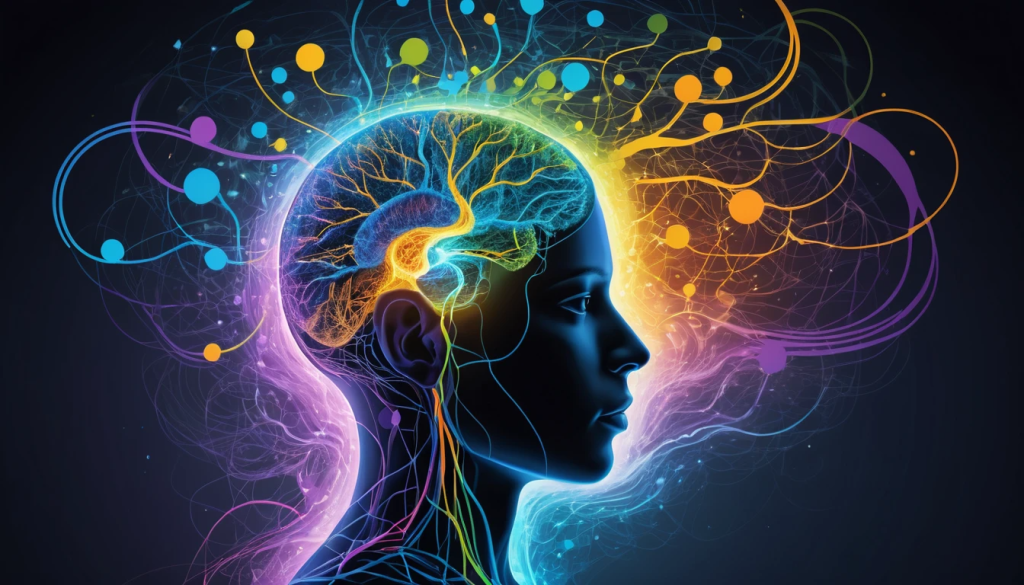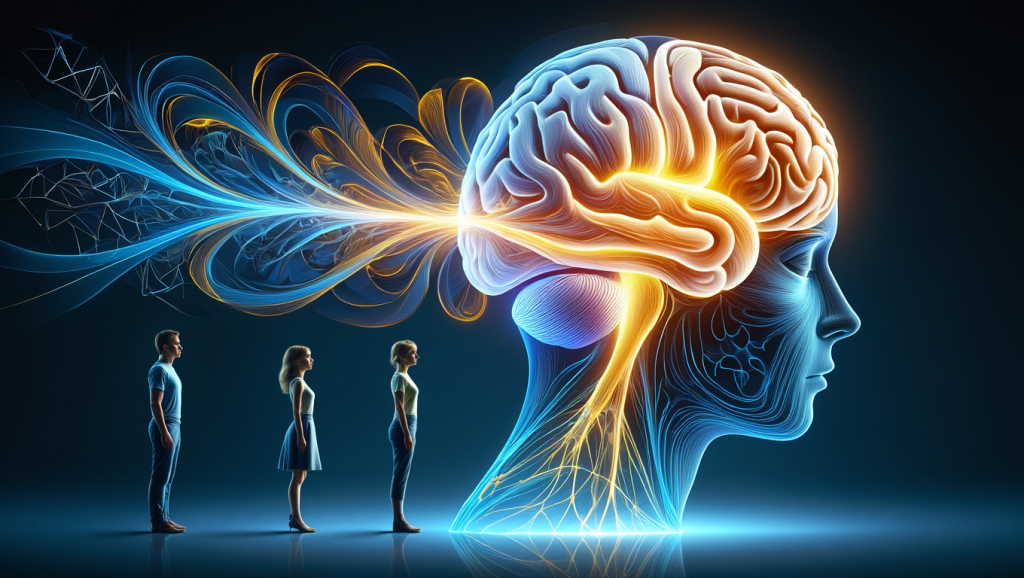Improving Sleep Quality with Self-Hypnosis Techniques
Sleep is perhaps the most fundamental pillar of health, affecting everything from cognitive function and emotional regulation to immune response and metabolic health. Yet in our hyper-stimulated, always-on world, quality sleep has become increasingly elusive for millions of people. An estimated 50-70 million Americans struggle with sleep disorders, while countless others experience suboptimal sleep without meeting clinical criteria for insomnia.
What makes sleep challenges particularly frustrating is that the harder you try to sleep, the more elusive it becomes. This paradox explains why conventional approaches often fail—they inadvertently create performance anxiety around sleep, activating the very stress responses that inhibit the transition to restful slumber.
Self-hypnosis offers a uniquely effective solution to sleep difficulties because it works with—rather than against—your brain’s natural sleep mechanisms. By inducing the same brainwave patterns that precede natural sleep, self-hypnosis creates an ideal neurological bridge to restful slumber while addressing the psychological factors that often disrupt sleep.
The Neuroscience of Sleep and Hypnosis
To understand why self-hypnosis works so effectively for sleep, it helps to understand the brain activity patterns involved in both processes:
The Sleep Cycle Brain Wave Patterns
As you progress through the sleep cycle, your brain transitions through several distinct brain wave patterns:
- Beta waves (14-30 Hz): The alert, wakeful state of normal consciousness
- Alpha waves (8-13 Hz): The relaxed, calm state that occurs when you close your eyes but remain awake
- Theta waves (4-7 Hz): The drowsy state between wakefulness and sleep, characterized by dreamlike imagery and reduced awareness of the external environment
- Delta waves (0.5-4 Hz): The deep sleep state essential for physical restoration and immune function
The critical transition point for people with sleep difficulties typically occurs between alpha and theta states—exactly where self-hypnosis excels at creating brain wave shifts.
Self-Hypnosis and Sleep Induction
Research using EEG monitoring shows that self-hypnosis naturally induces alpha and theta wave patterns—the same patterns that precede sleep. By spending time in self-hypnosis before bed, you’re essentially “pre-paving” the neurological pathway to sleep, making the transition smoother and more automatic.
A study published in the journal Sleep Medicine showed that hypnotic techniques increased sleep time by an average of 85% in participants with chronic insomnia while reducing sleep onset time (how long it takes to fall asleep) by over 50%.
Common Sleep Disruptors and How Self-Hypnosis Addresses Them
Before diving into specific techniques, let’s examine how self-hypnosis addresses the most common factors that disrupt sleep:
1. Hyperactive Mind / Racing Thoughts
Many people experience a frustrating “mind on overdrive” phenomenon when trying to sleep, with thoughts jumping from work concerns to personal worries to random memories.
How Self-Hypnosis Helps: The focused attention aspect of self-hypnosis reduces default mode network activity in the brain—the network responsible for mind-wandering and self-referential thinking. This naturally quiets mental chatter while activating parasympathetic relaxation responses.
2. Anxiety About Sleep Itself
For chronic insomniacs, the bed often becomes associated with frustration and worry about sleep, creating a negative conditioning loop.
How Self-Hypnosis Helps: Hypnotic techniques can directly recondition these associations, helping your brain once again link your bed and bedroom with relaxation and sleep rather than wakefulness and worry.
3. Physical Tension and Activation
Muscle tension, shallow breathing, and other physical manifestations of stress inhibit the body’s natural sleep processes.
How Self-Hypnosis Helps: Hypnotic suggestions for physical relaxation can systematically reduce muscle tension while deepening breathing patterns, creating the physiological conditions conducive to sleep.
4. Disrupted Circadian Rhythms
Modern life, with its artificial lighting and irregular schedules, often disrupts natural circadian rhythms—the internal clock that regulates sleep-wake cycles.
How Self-Hypnosis Helps: Regular practice helps reset and strengthen your natural circadian signals through consistent pre-sleep routines and suggestions that reinforce your body’s natural rhythms.
The 7-Day Sleep Reset Protocol
This structured protocol combines self-hypnosis with sleep hygiene principles to create comprehensive improvement in sleep quality. The 7-day timeframe is based on research showing that most people experience significant improvement within one week of consistent practice, with effects continuing to strengthen over time.
Preparation: Sleep Environment Optimization
Before beginning the self-hypnosis protocol, take time to optimize your sleep environment:
- Temperature: Set room temperature to 65-68°F (18-20°C)—the ideal range for sleep
- Light: Eliminate all sources of light, including electronic standby lights
- Sound: Consider white noise or soft nature sounds if complete silence isn’t possible
- Comfort: Ensure your mattress, pillows, and bedding support comfort
- Electronics: Remove or power down all electronic devices
Day 1: The Foundational Sleep Session
Begin with this foundational self-hypnosis session, practiced 30-60 minutes before your intended bedtime:
Step 1: Progressive Body Relaxation
- Lie comfortably in bed, arms at your sides
- Take three deep abdominal breaths
- Beginning with your feet, consciously relax each muscle group
- Work upward through your body—ankles, calves, thighs, hips, abdomen, chest, hands, arms, shoulders, neck, and face
- With each area, suggest: “My [body part] is becoming heavy, warm, and completely relaxed”
Step 2: Mind Quieting Visualization
Once physically relaxed, quiet your mind with this visualization:
“I imagine my thoughts as leaves floating on a gentle stream. I don’t need to follow any thought—I simply notice each one and let it drift away. The stream flows at just the right pace, carrying away any thoughts that arise. My mind becomes increasingly quiet and peaceful with each passing moment.”
Step 3: Sleep Countdown
“As I count down from 10 to 1, I move deeper into relaxation with each number. By the time I reach 1, I will be perfectly prepared for a night of deep, restful sleep.
10… My body is completely relaxed 9… My breathing is deep and regular 8… My mind is becoming quiet and still 7… A pleasant heaviness spreads throughout my body 6… I’m drifting deeper with each breath 5… All tension melts away completely 4… I’m moving closer to the edge of sleep 3… My mind and body are in perfect harmony for sleep 2… I let go completely now 1… I drift now into deep, restorative sleep that lasts throughout the night”
Practice this full sequence on Day 1, recording the process in your own voice if possible. For many, this session alone creates significant improvement.
Day 2: Adding Mental Sanctuary Creation
On Day 2, add this powerful mental sanctuary technique after the progressive relaxation and before the countdown:
“I now create my perfect sleep sanctuary in my mind. This is a special place that exists only for perfect, restful sleep.
I notice every detail of this peaceful place—the comfortable surfaces, the perfect temperature, the gentle sounds, and the feeling of complete safety. Time moves differently here… each moment in this sanctuary gives my body and mind deep restoration equivalent to hours of regular sleep.
I can return to this sanctuary each night, and with each visit, I move more quickly and easily into deep, restful sleep. This sanctuary becomes stronger and more effective each time I visit.”
Spend 3-5 minutes fully experiencing this sanctuary before proceeding to the sleep countdown.
Day 3: Adding Circadian Reset Suggestions
On Day 3, add these circadian rhythm suggestions after the sanctuary visualization:
“My body’s natural clock is now resetting to its optimal rhythm. My natural sleep time is [your target bedtime] and my natural wake time is [your target wake time]. This rhythm becomes stronger each day, making it easier to fall asleep and wake refreshed.
My body is now producing sleep hormones at exactly the right times. Melatonin naturally increases in the evening, preparing me for sleep, while my wake hormones rise in the morning, creating natural alertness.
Each day, this rhythm strengthens, creating a virtuous cycle of increasingly restorative sleep.”
Day 4: Adding Dream Programming
On Day 4, add suggestions for positive dream experiences:
“As I sleep tonight, my dream experiences will be pleasant and restorative. If any challenging dream content arises, I recognize it as simply my mind processing information, and I remain deeply asleep while my subconscious addresses these matters constructively.
My dreams enhance my creativity, help integrate my experiences, and contribute to my emotional well-being. I may or may not remember my dreams upon waking, but either way, they serve my highest good during sleep.”
Day 5: Adding Sleep Continuity Enhancement
On Day 5, add suggestions for maintaining continuous sleep throughout the night:
“Tonight I sleep deeply and continuously throughout the night. If I become aware at any point, I simply note that awareness with calm detachment and effortlessly drift back into restful sleep.
My body knows exactly how to cycle naturally through sleep stages for optimal restoration. Each sleep cycle flows perfectly into the next without disruption. If brief awakenings occur, they’re so brief and peaceful that they don’t interrupt my sleep’s restorative quality.”
Day 6: Adding Waking Refreshed Programming
On Day 6, add suggestions for the quality of your awakening:
“I will awaken at [target wake time] feeling completely refreshed, energized, and ready for the day. The transition from sleep to wakefulness will be smooth and pleasant. My mind will be clear, my mood positive, and my energy levels optimal.
As I awaken, I’ll take a moment to appreciate the quality of my rest and set a positive intention for the day ahead. Each morning, I awaken feeling better rested than the day before as my sleep quality continues to improve.”
Day 7: Integration and Personalization
On Day 7, review your experiences from the previous six days and personalize your session by amplifying elements that seemed most effective for you while modifying or reducing elements that felt less helpful.
Create a “maintenance version” of your session that incorporates all the elements that worked best for you, typically lasting 15-20 minutes. This becomes your ongoing sleep self-hypnosis practice.
Specialized Techniques for Common Sleep Challenges
Beyond the core protocol, these specialized techniques address specific sleep difficulties:
For Sleep Onset Insomnia (Difficulty Falling Asleep)
If your primary challenge is falling asleep, add this visualization after progressive relaxation:
“I imagine myself at the top of a beautiful staircase with 20 steps. Each step takes me deeper into relaxation. As I descend, I notice details of the staircase—the texture of the handrail, the feel of each step beneath my feet. With each step down, my body becomes twice as relaxed and my mind twice as quiet.
When I reach the bottom step, I find myself in front of a door. Behind this door is perfect, restful sleep. As I open the door, I feel a wave of sleepiness wash over me. I step through the doorway and allow myself to drift effortlessly into deep, restorative sleep.”
For Sleep Maintenance Insomnia (Nighttime Awakening)
If you tend to wake during the night and struggle to return to sleep, practice this mini-session when awakening:
“I notice that I’m awake, and that’s perfectly fine. Rather than checking the time or worrying about sleep, I simply allow my body to receive rest in this present moment. I focus on the feeling of my body against the bed, the comfort of my position, and my slow, steady breathing.
I don’t need to fall asleep right now—I simply need to rest. As I continue resting with this peaceful awareness, sleep will return naturally at the perfect time. There’s nothing I need to do except rest in this moment.”
Practice this awareness whenever you wake during the night, without pressuring yourself to sleep. Paradoxically, this acceptance often facilitates quick return to sleep.
For Stress-Related Sleep Disruption
If stress or anxiety disrupts your sleep, add this releasing technique after progressive relaxation:
“I now create a special container for any concerns, worries, or unfinished business from today. I visualize this container in whatever form feels right—perhaps a box, a vessel, or a bubble. One by one, I place any lingering concerns into this container.
I don’t need to solve or address these matters now—I’m simply setting them aside until tomorrow when I’ll have the energy and resources to address them effectively. As each concern goes into the container, I feel a sense of relief and lightness.
When all concerns are contained, I seal the container and place it somewhere safe in my visualization, knowing I can retrieve it tomorrow if needed. My mind is now free to rest completely.”
For Jet Lag or Shift Work
If your sleep difficulties relate to time zone changes or irregular work schedules, add these suggestions:
“My body now adapts quickly and efficiently to my current sleep schedule. Regardless of external time cues, my body recognizes that now is the time for restorative sleep. My internal clock is flexible and responsive, allowing me to sleep soundly whenever I have the opportunity.
When it’s time to be alert, my body produces energizing hormones, and when it’s time to sleep, my sleep hormones flow abundantly. This flexibility serves me well, allowing quality rest regardless of external circumstances.”
Advanced Sleep Enhancement Techniques
Once you’ve established the basic protocol, consider incorporating these advanced techniques:
1. Lucid Dreaming Preparation
Lucid dreaming—becoming aware that you’re dreaming while in the dream state—can enhance sleep quality by reducing nightmares and increasing sleep satisfaction:
“As I sleep tonight, I may become aware that I’m dreaming. If this awareness occurs, I remain calm and interested, allowing the dream to continue while I observe with peaceful awareness. I can explore this dream environment with curiosity and confidence, knowing I’m perfectly safe while my body rests deeply.”
2. Symbolic Sleep Guardian
This technique creates a subconscious protection for your sleep:
“I now create a sleep guardian in my mind—a symbol of perfect sleep protection. This guardian can take any form that feels right to me [an animal, light, shield, etc.]. This guardian’s sole purpose is to watch over my sleep, ensuring its quality and continuity.
My guardian filters out any unnecessary disruptions while allowing me to awaken quickly if genuinely needed. I can trust my sleep guardian completely, allowing me to surrender fully to restorative sleep.”
3. Future Sleep Programming
This advanced technique creates positive expectations for sleep improvement:
“Each day, my sleep quality improves in noticeable ways. One month from now, falling asleep will be easy and natural. Three months from now, sleeping through the night will be my normal experience. Six months from now, I will consider myself an excellent sleeper who rarely thinks about sleep because it happens so naturally.
I now see and feel my future self enjoying this improved sleep. I experience the increased energy, mood improvement, and enhanced performance that comes with consistently restorative sleep. This positive future is already unfolding with each passing day.”
The Science Behind Lasting Improvement
Research into neuroplasticity—the brain’s ability to reorganize itself by forming new neural connections—shows why consistent practice of sleep self-hypnosis creates lasting benefits:
- Reconditioning: Regular practice reconditions your neurological associations with sleep, replacing anxiety-producing patterns with relaxation responses.
- Autonomic Regulation: Self-hypnosis strengthens parasympathetic nervous system activation, making the physiological shift to sleep more automatic.
- Circadian Entrainment: Consistent practice reinforces natural circadian rhythms by providing regular cues to your body’s internal clock.
- Cognitive Restructuring: Sleep-enhancing suggestions gradually reshape your thoughts and beliefs about sleep, reducing performance anxiety.
Most people notice initial improvement within 3-5 days, with effects continuing to strengthen over weeks of practice. After 21-30 days of consistent use, many people find they no longer need the full protocol, as their brain has established new, healthy sleep patterns.
Tips for Maximum Effectiveness
To get the most from your sleep self-hypnosis practice:
- Consistency is key: Practice at the same time each night to strengthen circadian cues.
- Create a trigger routine: A brief pre-hypnosis routine (such as three deep breaths or touching your thumb and forefinger together) can become a conditioned cue for relaxation.
- Record your session: Using your own voice creates powerful self-suggestion, and a recording eliminates the need to remember the sequence.
- Honor the transition: Allow 15-30 minutes of technology-free time before your self-hypnosis practice to help your brain transition.
- Track your results: Keep a simple sleep journal noting quality, duration, and how you feel upon waking to measure your improvement.
- Trust the process: Self-hypnosis works through a natural unfolding rather than forced effort. Allow changes to emerge at their own pace.
Conclusion: Beyond Better Sleep to Enhanced Well-Being
The benefits of improving your sleep through self-hypnosis extend far beyond the bedroom. Research consistently shows that enhanced sleep quality improves cognitive function, emotional regulation, immune response, metabolism, creativity, and overall life satisfaction.
Perhaps most importantly, the skills you develop through sleep self-hypnosis—the ability to shift your mental state, regulate your nervous system, and influence autonomic functions—have applications across many areas of life. Many people find that these same techniques help with stress management, focus, creativity, and even pain management.
By reclaiming your natural ability to sleep deeply and restfully, you’re not just addressing a problem—you’re enhancing your overall capacity for health, performance, and well-being.
In our next post, we’ll explore how self-hypnosis can boost confidence and self-esteem, creating positive changes in how you perceive yourself and interact with the world.
Have you struggled with sleep issues? Which aspects of sleep—falling asleep, staying asleep, or waking refreshed—present the greatest challenge for you? Share your experiences in the comments below!
Disclaimer: While self-hypnosis is highly effective for common sleep difficulties, persistent severe insomnia may require additional medical evaluation. This approach works best when combined with good sleep hygiene practices and appropriate medical care when needed.







